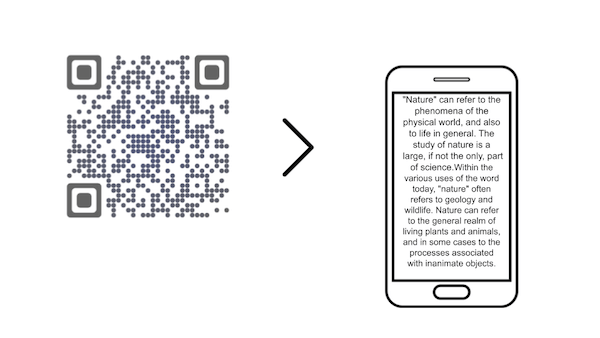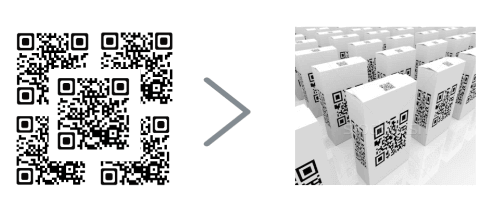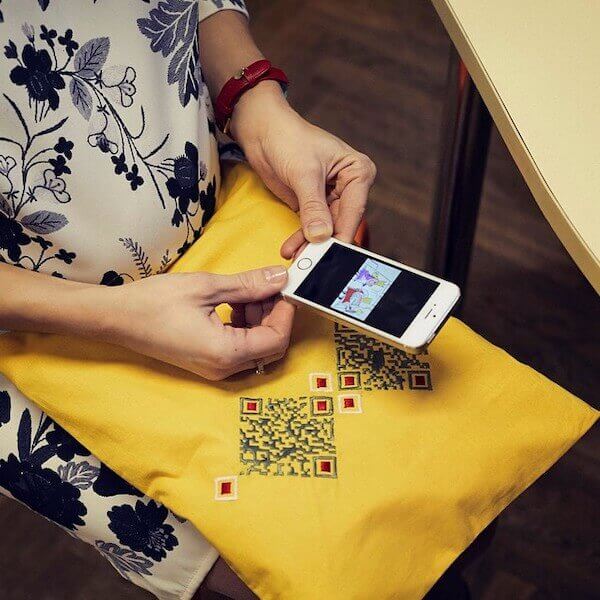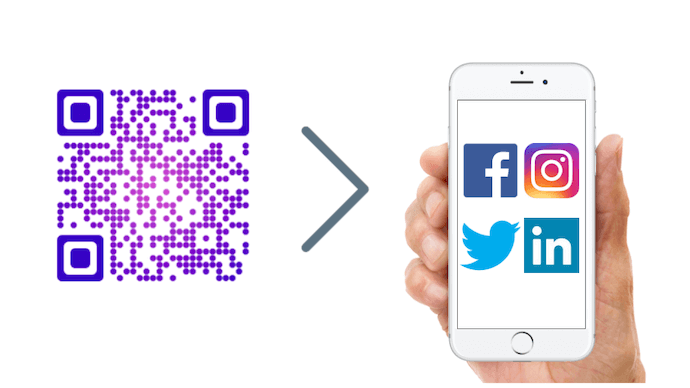You are probably into textiles business and already know what QR Codes are. These square-shaped barcodes are a common sight now. Thanks to increased smartphone penetration and high-speed internet access.
You would have already seen them being used for promotions and payments. In fact, if you have a brick and mortar store, you might also be using QR Codes for payments.
You now want to explore their utility beyond payments. And you are right. QR Codes can store a wide variety of content. It could be text, website links, images, videos, or even infographics.
This versatility of content creates a room for enormous applications of QR Codes. In this article, we will see five ways in which QR Codes can be used in textiles. And how the textile industry is already using them for such use cases.
A. To furnish fabric details
Every thread of fabric is unique. So is the process to handle it. Hence, it is important for customers to know the process to maintain the cloth’s quality.
And as a manufacturer, it is your job to tell them how they can handle it. But how do you provide these details? You cannot print them on the fabric or its tag, right? This is where a QR Code comes into the picture.
If you have a website, you can add all these details on a webpage. And with its link, create a Website URL QR Code.
In case you don’t have a website, you can create a Text QR Code. When scanned, it takes the end-users to see text-based instructions or fabric details.

But besides textual details, people now also prefer multimedia. In fact, there might sometimes be situations where simple text won’t suffice.
For example—customers today want to be informed on what they invest their money on. Hence, they are often interested in knowing details such as where is the fabric coming from. Or how is it manufactured?
Here, a video, an infographic, or an image gallery would be better suited. So in such cases, you can create a QR Code accordingly and use it.
Kristi Kuusk, a textile designer and researcher, added QR Codes to her fabrics. These QR Codes, when scanned, took customers to see the fabric’s life cycle.
Similarly, Povigy (a tool that helps people know what they’re spending money on) uses QR Codes to enlighten buyers.
Their representatives travel to manufacturing sites and observe the process. Then they create a record of this information to create QR Codes. And these QR Codes are added to textile labels for customers to scan.
B. To manage your inventory
Do you know what QR Codes were actually invented for? Back in 1994 in Japan, Denso Wave Corporation devised them to track inventory. And due to their high data storage capacity and user-friendliness, they picked up everywhere.
Similarly, you can use them to keep an eye on your inventory. For example—you can create Serial Code QR Codes with unique product IDs. And download them as printable labels. Then add these QR Codes to your products to track them.

Or say you ship your fabrics to various locations and want to monitor it. Here, a QR Code can help you monitor the exact location of your products. How?
You can add them to your products. And as they move from one location to another, inventory operators will have to scan these QR Codes.
When they do it, you will be able to see data on exactly when and where the QR Code was scanned. This is due to its GPS location tracking feature.
Note that you can only avail this feature if your QR Code provider offers it.
C. To make your fabric design innovative
As a textile company, you do want to provide quality fabric to the customers. But that’s not where it ends. You also have to provide the design options that meet the customer’s eye.
While taking care of color combinations and patterns is important, you must also provide something unique.
And we are talking about interactive designs here. Designs that are not only good to look at but also go a step ahead to engage the customers. And QR Codes help you do it easily.
But before you go ahead, think about what would you like the QR Code to do? For example—you might want it to take customers to your website or provide them the best offers.
Or you may also add a fun game or puzzle to it. Or you could also want them to watch a video or see an image gallery.
Once you’re sure what the QR Code will do, you can ahead to create one. And as you create the QR Code, you can proceed to print it on the apparels. Or even embroider it.
Just make sure that the QR Code has enough contrast with the fabric color. That means if the fabric is light in color (say white), use dark colors in the QR Code (such as black). And vice-versa.
This color contrast is important to ensure the smooth scannability of the QR Code. The ones with poor contrast do not scan well.
Kriti Kuusk, a textile researcher and designer, used QR Codes to come up with such interactive designs. She created two prototypes of QR Codes. One of them took users to see fairy tales and the other to watch the fabric’s life cycle.

Similarly, QR Codes have also be woven on sweaters to point to the artists’ other works.
D. To tackle the issue to fake designs
Fake brands and designs are a common issue in practically every industry today. With a number of unauthorized sellers, buyers find it difficult to differentiate between fake and genuine products.
But QR Codes are being used to curb this problem in many industries already. And they can be used in the textile industry too.
For example—say you have your company’s website. You can create a unique QR Code for each apparel containing a webpage address on your website. This webpage will be unique for each QR Code and will show the cloth’s serial number, name, price, etc. on your website.
Hence, as customers scan this QR Code, they will be able to see these details. And since they will be on your website, it will help them verify the authenticity of the material too.
You can also use the QR Code’s custom domain feature to strengthen the process further. Here is a detailed guide to learn more about it.
Yes, you read it right. A majority of your customers would be active on social media. And who doesn’t like getting some followers?
You can help your customers do it via their clothing. In fact, it is already being done by the artist Julie Helles Ericksen.
Julie created jackets with QR Codes woven in them. As people scanned this QR Code, it took them to the wearer’s social media accounts. And we call it—a Social Media QR Code.

According to Ericksen:
“We communicate to others through what we wear, what we post on social media, and what we choose to hide. We curate ourselves to present different versions.”
So she designed a jacket that brings different faces of the wearer’s life together.
Similarly, you can also come up with an idea that sets your products apart from the rest.
These are five ways textile companies can use QR Codes. And if you want to use them for one such use case, you will have to create them. And now the question is:
How to create QR Codes
You will obviously need a QR Code generator to do the job. But first, you will have to be sure if you want QR Codes in large numbers or just a few would suffice.
This is because if you just need a couple of them, you can create them one-by-one using any QR Code generator. And to know which one of them will suit you the best here’s a detailed comparison chart of the top ones.
In case you need a large number of QR Codes, creating them individually will take a lot of time.
Here, you can rather create them in bulk using a bulk generator service. And we have compiled a comparison chart of the best QR Code bulk generators. You can go through it to decide the best one for your use case.
Also, decide whether you want static or dynamic QR Codes. Static QR Codes are permanent in nature and cannot be tracked.
That means once you create them, you cannot edit them. To do it, you will have to create new QR Codes altogether. They are most suited for purposes such as inventory management.
But dynamic QR Codes are both editable and trackable. That means you can edit them even after creating them and monitor their scanning activity.
That’s it. Once you decide on these requirements, you can go ahead to create QR Codes for your textiles.
[cta1 caption=”Create a QR Code to make your processes better” content=”Get started with your first QR Code” buttontext=”Create QR Code now” destination=”https://scanova.io/design-qr-code-generator.html?utm_source=yt_sd_qr-codes-textiles_bod&utm_medium=blog&utm_campaign=content#/chooseqr/” image=”https://scanova.io/blog/wp-content/uploads/2016/12/qrcode-8.png”]Do you know a use case for QR Codes in the textiles that we missed? Share it in the comments.
